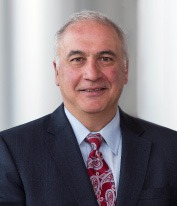DTE Energy plans to continue capitalizing on renewable opportunities

ORLANDO — Detroit-based DTE Energy, the state’s biggest electricity supplier, is also Michigan’s largest investor in and producer of renewable energy, Jerry Norcia, the company’s president and chief operating officer, said during the Edison Electric Institute’s (EEI) 52nd Financial Conference held here Nov. 5-8.
The Fortune 300 company’s growth has been driven by “strong, stable utilities and complementary non-utility businesses,” Norcia said Nov. 7 in disclosing the company’s latest financials during an EEI conference session simultaneously webcast the same day.
DTE’s operating units include the investor-owned electric utility that serves 2.2 million customers in southeastern Michigan and a natural gas utility serving 1.3 million customers statewide. The DTE Energy portfolio includes non-utility energy businesses focused on power and industrial projects, natural gas pipelines, storage and energy marketing and trading.
Opportunities for DTE Energy growth include the company’s transition to cleaner energy, automation and technology deployment, said Norcia, who outlined DTE’s five-year $17 billion capital investment plan — a 21 percent increase over the current plan — that is expected to extend the company’s current growth from 2018 through 2022.
“The current investment plan is significantly higher than previous five-year plans,” said Norcia, “and will include investments in very attractive cogeneration and renewable gas projects.”
Specifically, DTE plans roughly $10.4 billion in electric investments that continue generation and distribution infrastructure replacement, such as transitioning DTE’s generation portfolio to more sustainable energy, Norcia said.
DTE Energy’s more sustainable generation is part of an aggressive plan to reduce carbon emissions from 2005 levels: 30 percent by 2022; 45 percent by 2030; 75 percent by 2040; and more than 80 percent by 2050.
The company’s “steady march toward zero-emitting and low-emitting resources,” he added, will come via DTE Energy’s planned retirements of its River Rouge, St. Clair, Trento Channel, Belle River and Monroe coal-fired power plants during that same time frame.
Simultaneously, DTE plans to add about 4,000 megawatts (MW) of renewable (mostly wind) and 3,500 MW of natural gas capacity, he said. DTE also is integrating two renewable natural gas acquisitions and is in advanced discussions on several others. “This is a great business line for us,” Norcia said.
Indeed, DTE’s plan is to provide customers with 40 percent of their power from new, natural gas-fired power plants; 40 percent from renewable energy; and 20 percent from nuclear.
And while this plan requires substantial infrastructure investments, company executives have said they also intend to keep any rate increases near the yearly rate of inflation to protect customers from spikes in high energy costs.
“We are getting a lot of support from the [Michigan Public Service] Commission on our plan to retire plants and replace them with green-fired generation,” Norcia said. “We feel there’s strong overall support for this plan.”
In bringing more renewable energy sources on line like wind, DTE Energy also has plans to invest in solar and biomass as it “continues pushing for greater efficiency in the ways we use and produce energy,” said Norcia.
And as it transitions its portfolio to cleaner more sustainable generation, he said DTE’s distribution investments will increase reliability and customer satisfaction.
“The key is to achieve reliability without sacrificing affordability,” said Norcia. “Our customers are looking for and expecting an upgraded infrastructure system.”
